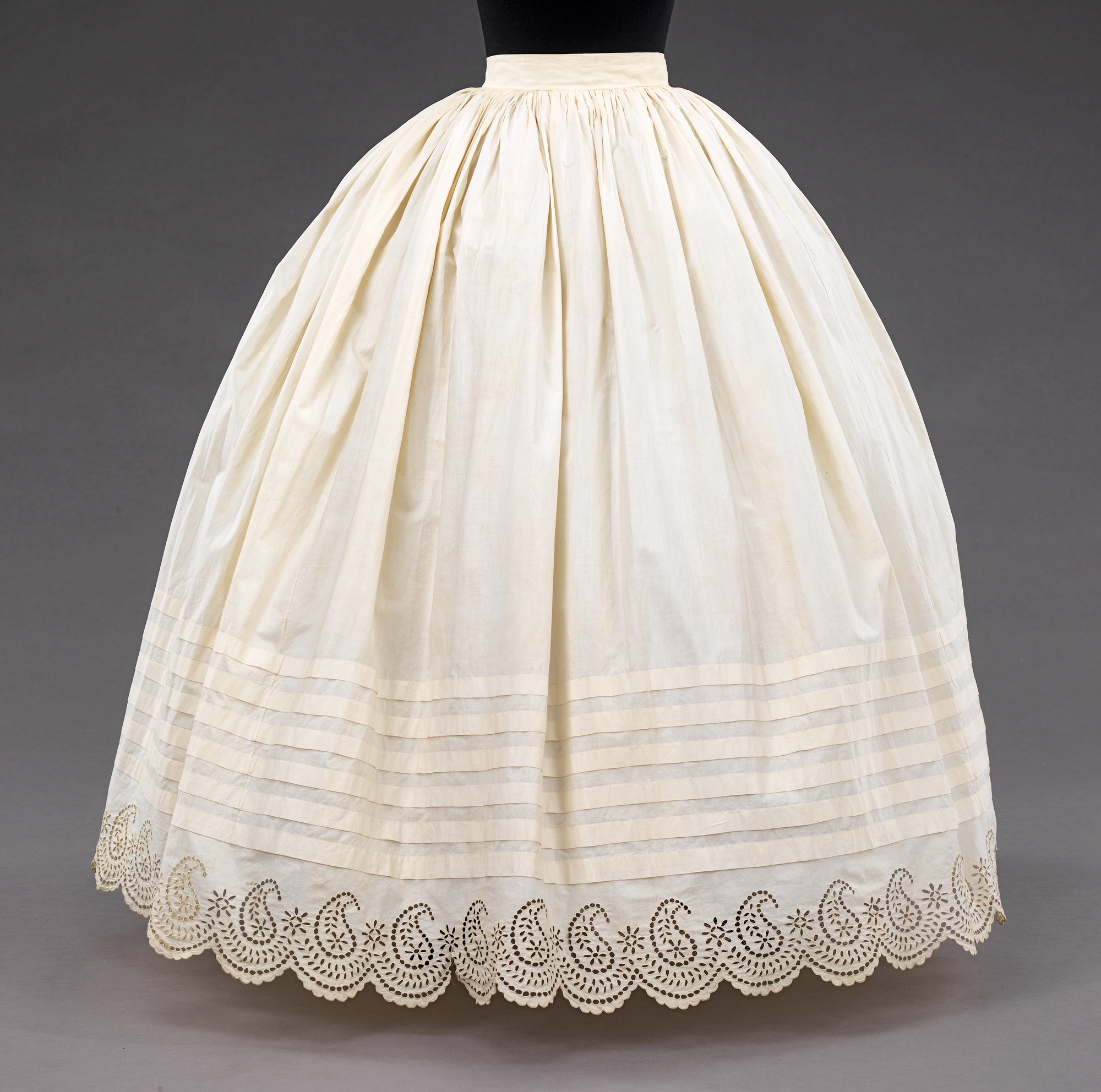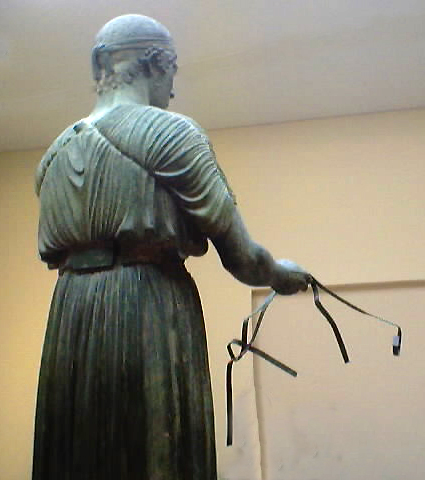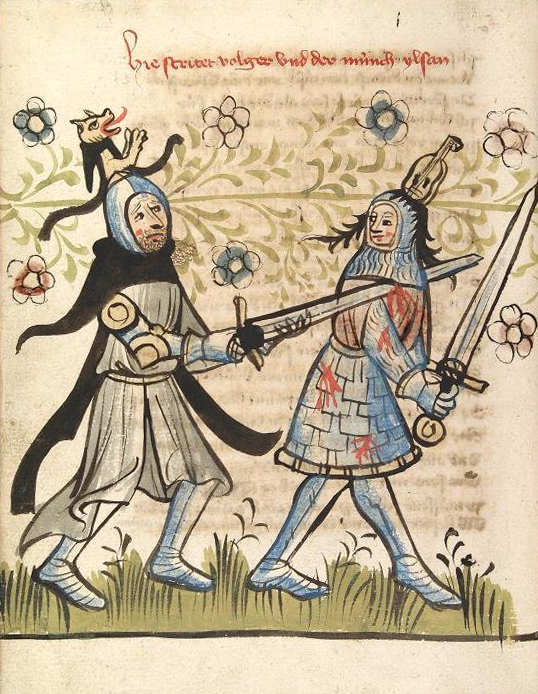|
Cotte
The cotte (or cote) was a medieval outer garment, a long sleeved shift, or tunic, usually girded, and worn by men and women. In medieval texts, it was used to translate ''tunica'' or ''chiton''. Synonyms included tunic or gown. It was worn over a shirt (''chemise''), and a sleeveless surcote could be worn over it. By the sixteenth century, it had become a woman's undergarment. By the seventeenth century, it split into an upper 'corps' and a lower 'cotte', or skirt, amongst the poorer classes. In modern French, it survives in the expression ("chainmail"). The Old French also gave rise to the word ("cotillion", a dance). ''Petticoat'' is another indirect descendant of . See also * Coat (other) * Surplice A surplice (; Late Latin ''superpelliceum'', from ''super'', "over" and ''pellicia'', "fur garment") is a liturgical vestment of Western Christianity. The surplice is in the form of a tunic of white linen or cotton fabric, reaching to the kne ... (cotta), a litu ... [...More Info...] [...Related Items...] OR: [Wikipedia] [Google] [Baidu] |
Cotillion
The cotillion (also cotillon or French country dance) is a social dance, popular in 18th-century Europe and North America. Originally for four couples in square formation, it was a courtly version of an English country dance, the forerunner of the quadrille and, in the United States, the square dance. It was for some fifty years regarded as an ideal finale to a ball but was eclipsed in the early 19th century by the ''quadrille''. It became so elaborate that it was sometimes presented as a concert dance performed by trained and rehearsed dancers. The later "German" cotillion included more couples as well as plays and games. Names The English word ' is a variation of the French (which does not have ''i'' in the last syllable). In English, it is pronounced // or //; but in French, it is // (without the // sound, despite the spelling). The French word originally meant "petticoat (underskirt)" and is derived from Old French (‘cotte’) and the diminutive suffix . There ... [...More Info...] [...Related Items...] OR: [Wikipedia] [Google] [Baidu] |
Petticoat
A petticoat or underskirt is an article of clothing, a type of undergarment worn under a skirt or a dress. Its precise meaning varies over centuries and between countries. According to the ''Oxford English Dictionary'', in current British English, a petticoat is "a light loose undergarment ... hanging from the shoulders or waist". In modern American usage, "petticoat" refers only to a garment hanging from the waist. They are most often made of cotton, silk or tulle. Without petticoats, skirts of the 1850s would not have the volume they were known for. In historical contexts (16th to mid-19th centuries), ''petticoat'' refers to any separate skirt worn with a gown, bedgown, bodice or jacket; these petticoats are not, strictly speaking, underwear, as they were made to be seen. In both historical and modern contexts, ''petticoat'' refers to skirt-like undergarments worn for warmth or to give the skirt or dress the desired attractive shape. Terminology Sometimes a petticoat may be ... [...More Info...] [...Related Items...] OR: [Wikipedia] [Google] [Baidu] |
Tunic
A tunic is a garment for the body, usually simple in style, reaching from the shoulders to a length somewhere between the hips and the knees. The name derives from the Latin ''tunica'', the basic garment worn by both men and women in Ancient Rome, which in turn was based on earlier Greek garments that covered wearers' waists. Ancient era Indian tunic Indus valley civilization figurines depict both women and men wearing a tunic-like garment. A terracotta model called Lady of the spiked throne depicts two standing turban-wearing men wearing what appears to be a conical gown marked by a dense series of thin vertical incisions that might suggest stiffened cloth. A similar gold disc in the al-Sabah Collection from the Kuwait National Museum appears to be from the Indus Valley civilization depicts similar conical tunic-wearing men holding two bulls by their tails under a pipal tree shown in an Indus-like mirror symmetry. A mother goddess figurine from the National Museum new Delhi ... [...More Info...] [...Related Items...] OR: [Wikipedia] [Google] [Baidu] |
Chiton (costume)
A chiton (Greek: χιτών, ''khitōn'') is a form of tunic that fastens at the shoulder, worn by men and women of ancient Greece and Rome. There are two forms of chiton. One is the Doric chiton and the later Ionic chiton. According to Herodotus, popular legend was that Athenian women began to wear the chiton as opposed to the peplos after several women stabbed a messenger to death with the bronze pins characteristic of the peplos. Etymology The word ''chiton'' is derived from a Central Semitic language *''kittan'' (e.g. Hebrew כֻּתֹּנֶת ''kuttṓnĕṯ''), ultimately from a word for flax. Different forms and wearing styles A shorter version of the chiton was called the chitoniskos. Doric chiton The Doric chiton is a single rectangle of woolen or linen fabric. It can be worn plain or with an overfold called an ''apoptygma'', which is more common to women. It can be draped and fastened at the shoulder by pins (Greek: peronai; Latin: fibulae) or sewing, or by button ... [...More Info...] [...Related Items...] OR: [Wikipedia] [Google] [Baidu] |
Gown
A gown, from the Saxon word, ''gunna'', is a usually loose outer garment from knee-to-full-length worn by men and women in Europe from the Early Middle Ages to the 17th century, and continuing today in certain professions; later, the term ''gown'' was applied to any full-length woman's garment consisting of a bodice and an attached skirt. A long, loosely fitted gown called a Banyan was worn by men in the 18th century as an informal coat. The gowns worn today by academics, judges, and some clergy derive directly from the everyday garments worn by their medieval predecessors, formalized into a uniform in the course of the 16th and 17th centuries. Terminology A modern-day gown refers to several types of garments. It can refer to a woman's dress, especially a formal or fancy dress. It may also refer to a nightgown or a dressing gown. In academia, and other traditional areas such as the legal world, gowns are also worn on various formal or ceremonial occasions. History The ''g ... [...More Info...] [...Related Items...] OR: [Wikipedia] [Google] [Baidu] |
Chemise
A chemise or shift is a classic smock, or a modern type of women's undergarment or dress. Historically, a chemise was a simple garment worn next to the skin to protect clothing from sweat and body oils, the precursor to the modern shirts commonly worn in Western nations. Etymology The English word ''chemise'' is a loanword from the French word for shirt and is related to the Italian ''camicia'' or Latin ''camisia'', which, according to Elizabeth Wayland Barber, is likely derived from Celtic. History The chemise seems to have developed from the Roman ''tunica'' and first became popular in Europe in the Middle Ages. Women wore a shift or chemise under their gown or robe; while men wore a chemise with their trousers or ''braies'', and covered the chemises with garments such as doublets, robes, etc. Until the late 18th century, a chemise referred to an undergarment. It was the only underwear worn until the end of the Regency era in the 1820s, and was usually the only piece of ... [...More Info...] [...Related Items...] OR: [Wikipedia] [Google] [Baidu] |
Surcote
A surcoat or surcote is an outer garment that was commonly worn in the Middle Ages by soldiers. It was worn over armor to show insignia and help identify what side the soldier was on. In the battlefield the surcoat was also helpful with keeping the sun off the soldier and their armor which helped prevent heat stroke and heat exhaustion. The name derives from French meaning "over the coat", a long, loose, often sleeveless coat reaching down to the feet. History Men's surcoat From about the late 12th century, knights wore long, flowing surcoats. From the early to mid 13th century, these were frequently emblazoned with their personal arms, over their armour. These usually extended to about mid-calf, had slits in the bottom front and back, allowing the wearer to ride comfortably, and were either sleeved or sleeveless. Historians believe that the practice of wearing white surcoats was adopted during the Crusades, their main purpose being to reflect the direct sun, which overheate ... [...More Info...] [...Related Items...] OR: [Wikipedia] [Google] [Baidu] |
French Language
French ( or ) is a Romance language of the Indo-European family. It descended from the Vulgar Latin of the Roman Empire, as did all Romance languages. French evolved from Gallo-Romance, the Latin spoken in Gaul, and more specifically in Northern Gaul. Its closest relatives are the other langues d'oïl—languages historically spoken in northern France and in southern Belgium, which French ( Francien) largely supplanted. French was also influenced by native Celtic languages of Northern Roman Gaul like Gallia Belgica and by the ( Germanic) Frankish language of the post-Roman Frankish invaders. Today, owing to France's past overseas expansion, there are numerous French-based creole languages, most notably Haitian Creole. A French-speaking person or nation may be referred to as Francophone in both English and French. French is an official language in 29 countries across multiple continents, most of which are members of the ''Organisation internationale de la Francophonie'' ... [...More Info...] [...Related Items...] OR: [Wikipedia] [Google] [Baidu] |
Chainmail
Chain mail (properly called mail or maille but usually called chain mail or chainmail) is a type of armour consisting of small metal rings linked together in a pattern to form a mesh. It was in common military use between the 3rd century BC and the 16th century AD in Europe, and longer in Asia and North Africa. A coat of this armour is often called a hauberk, and sometimes a byrnie. History The earliest examples of surviving mail were found in the Carpathian Basin at a burial in Horný Jatov, Slovakia dated at 3rd century BC, and in a chieftain's burial located in Ciumești, Romania. Its invention is commonly credited to the Celts, [...More Info...] [...Related Items...] OR: [Wikipedia] [Google] [Baidu] |
Old French
Old French (, , ; Modern French: ) was the language spoken in most of the northern half of France from approximately the 8th to the 14th centuries. Rather than a unified language, Old French was a linkage of Romance dialects, mutually intelligible yet diverse, spoken in the northern half of France. These dialects came to be collectively known as the , contrasting with the in the south of France. The mid-14th century witnessed the emergence of Middle French, the language of the French Renaissance in the Île de France region; this dialect was a predecessor to Modern French. Other dialects of Old French evolved themselves into modern forms (Poitevin-Saintongeais, Gallo, Norman, Picard, Walloon, etc.), each with its own linguistic features and history. The region where Old French was spoken natively roughly extended to the northern half of the Kingdom of France and its vassals (including parts of the Angevin Empire, which during the 12th century remained under Anglo-Norman rul ... [...More Info...] [...Related Items...] OR: [Wikipedia] [Google] [Baidu] |
Coat (other)
A coat is an outer garment worn on the upper body for warmth or fashion. Coat may also refer to: *Coat, a layer of a certain substance, usually paint *Animal coat, the natural fur coat of an animal **Dog coat, the natural hair coat of a dog *Coat of arms, a heraldic design used to identify a nation, city, family, or individual *Lounge coat, another term for the lounge jacket as part of a lounge suit *Rug (animal covering), also known as an animal coat, an article of clothing for animals *Cindy Coat, French female canoeist See also * Coate (other) * Coats (other) * Cote (other) {{disambig nl:Jas ... [...More Info...] [...Related Items...] OR: [Wikipedia] [Google] [Baidu] |
Surplice
A surplice (; Late Latin ''superpelliceum'', from ''super'', "over" and ''pellicia'', "fur garment") is a liturgical vestment of Western Christianity. The surplice is in the form of a tunic of white linen or cotton fabric, reaching to the knees, with wide or moderately wide sleeves. It was originally a long garment with open sleeves reaching nearly to the ground. As it remains in the Western Christian traditions, the surplice often has shorter, closed sleeves and square shoulders. Anglicans typically refer to a Roman-style surplice with the Medieval Latin term ''cotta'' (meaning "cut-off' in Italian), as it is derived from the cut-off alb. English-speaking Catholics typically do not make the distinction between the two styles and refer to both as a "surplice". Origin and variation it seems most probable that the surplice first appeared in France or England, whence its use gradually spread to Italy. It is possible that there is a connection between the surplice and the Gall ... [...More Info...] [...Related Items...] OR: [Wikipedia] [Google] [Baidu] |







